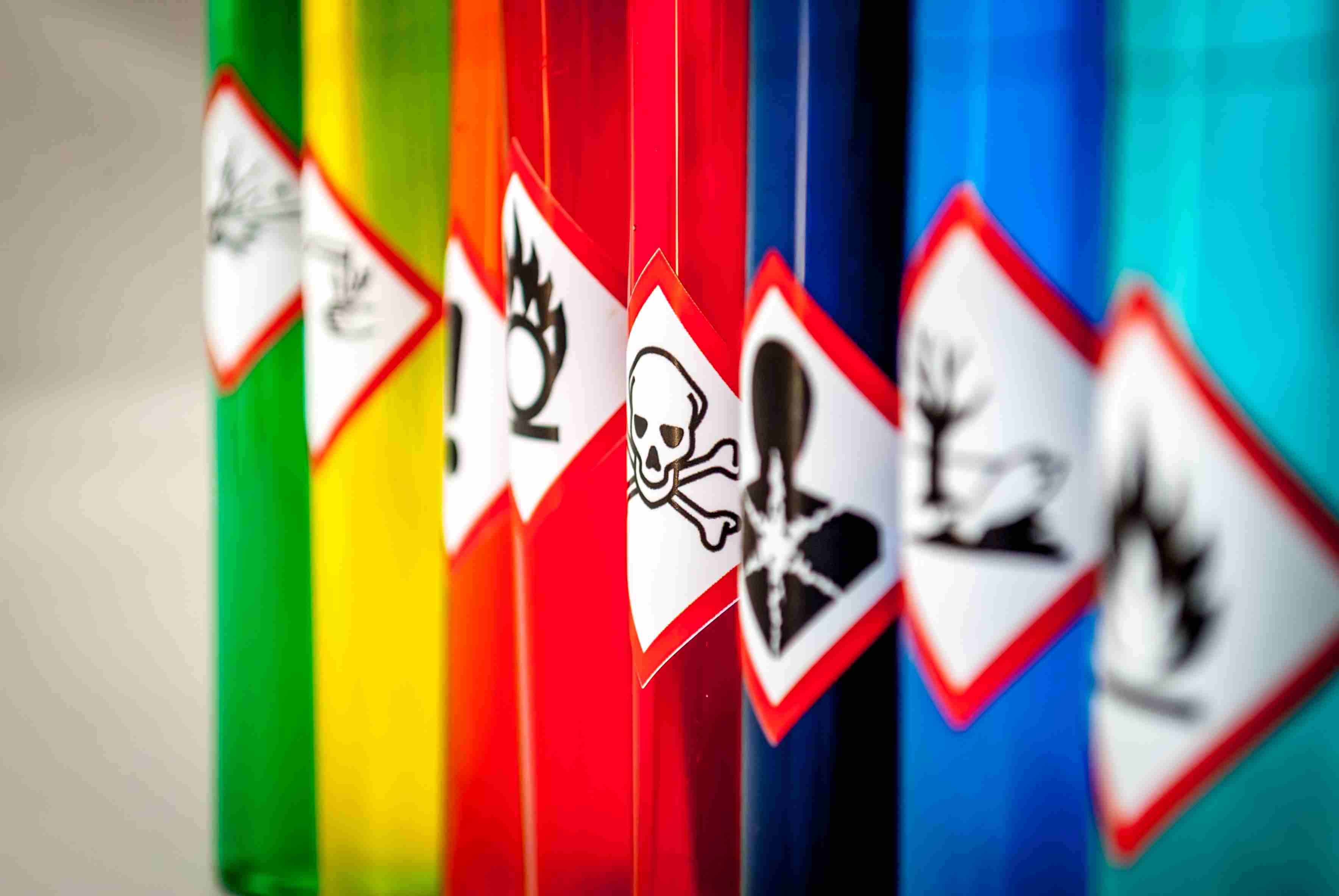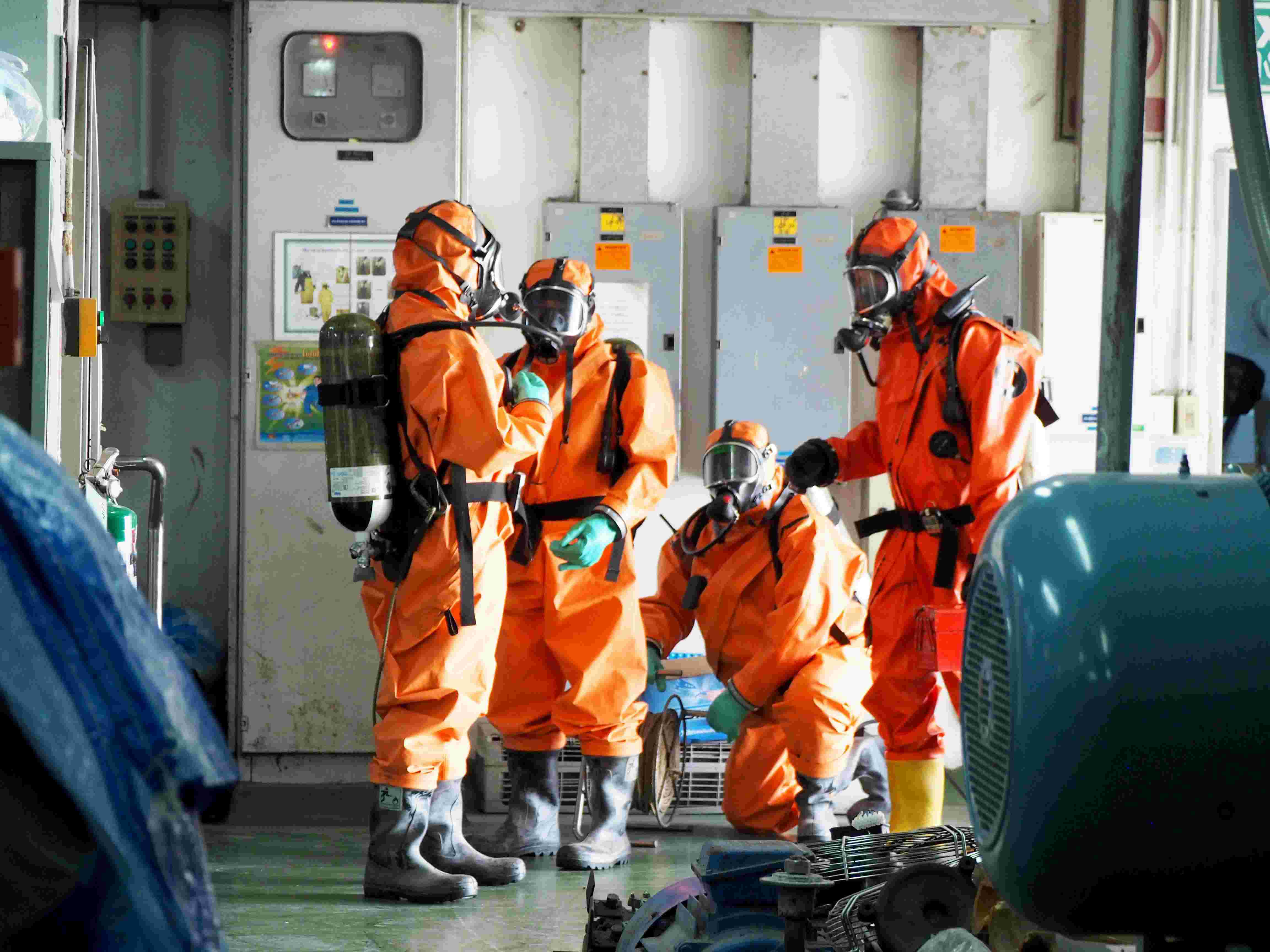
Clean Air Act: History, Standards & Safety
The Clean Air Act (CAA) is a federal law that regulates air emissions from both stationary (industrial) and mobile sources throughout...


Corrosive materials are present in almost every workplace. From batteries to disinfectants, they are used in a variety of things, so it is important to recognize them. Corrosive materials can be defined as any liquid that has a severe corrosion rate on steel, which makes them very dangerous. Workers must be aware of their hazards and how to work safely with them. Corrosive chemicals can attack and destroy body tissues by dermal exposure. After flammable liquids, corrosive chemicals are the second most commonly used or transported hazardous material.
There are two main types of materials that are powerful enough to corrode steel:

In encounters with corrosive chemicals, the eyes, skin, and respiratory system are often the primary areas of the body susceptible to harm. This vulnerability can arise from various scenarios, such as:
Chemicals can pose a threat when poured, leading to potential splashes that may come into contact with the eyes, skin, or respiratory passages.
Mixing or diluting corrosive substances, as well as engaging in chemical reactions, can generate splashes that might affect the eyes, skin, or respiratory system.
Accidental spills during the transportation of chemical containers, as well as leaks from compromised containers, can result in exposure to corrosive substances.
Open or leaking containers may emit corrosive vapors, posing a risk to the respiratory system if inhaled.
Some acids and bases are so corrosive that they can cause instant and severe chemical burns just by momentary exposure. There are three ways in which workers can encounter these hazards.
Exposure to dust particles from any solid corrosive chemical can cause severe internal and external injuries. Massive exposure to these forms of solids may result in a fatality in a matter of a few minutes.
Dermal exposure to any corrosive liquid can cause instantaneous chemical burns. Avoid splashing when handling liquid corrosives.
This is the most dangerous of all the three hazards. When a corrosive vapor cloud is generated by accident, large-scale site evacuation is usually required. Fuming corrosive liquids have the potential to spontaneously produce vapor clouds. Injuries from vapor exposure can range from permanent damage to the eyes, throat, airway, and respiratory system.
Workers should take extreme precautions and follow OSHA’s recommended preventive measures to minimize the chance of the occurrence of exposure when handling any corrosive materials.
The most common dermal exposure to corrosive chemicals can be fully prevented by wearing appropriate protective equipment. For example, in some situations, it’s required by OSHA to wear a face shield or work from behind a splash shield in addition to the standard protection. Personal Protective Equipment requirements may vary depending on the type and concentration of corrosive materials being handled, as well as the specific job tasks. However, here are some general recommendations for PPE when working with corrosives:
Safety goggles or a full-face shield with splash protection should be worn to protect the eyes from splashes, mists, or fumes of corrosive substances.
Chemical-resistant gloves made of materials such as nitrile, neoprene, or PVC should be worn to protect the hands from direct contact with corrosive substances. Make sure that the gloves are appropriate for the specific corrosive material being handled, as different materials have different resistance levels.
Wear chemical-resistant clothing, such as coveralls or aprons, to protect the skin and clothing from splashes or spills. Make sure that the clothing covers the entire body, including arms and legs.
Chemical-resistant boots or shoe covers can help protect the feet from spills or splashes.

Depending on the nature of the corrosive substance and the potential for inhalation exposure, respiratory protection may be necessary. Use appropriate respiratory protective equipment, such as a mask or respirator, with the correct filter or cartridge for the specific corrosive material.
A chemical-resistant hood or headgear may be necessary to protect the head and neck from splashes or vapors.
Consider using additional protective equipment such as chemical-resistant aprons, face shields, or hoods depending on the level of exposure.
When exposed to a corrosive material, the best way to stop the chemical reaction is flushing. It is done to instantly neutralize the material. After flushing is complete, the victim should be treated with standard first-aid practices.
However, keep in mind that the extent of injury depends on the following variables:
Corrosives pose a serious threat to the life and health of workers, It's crucial to pick the right Personal Protective Equipment (PPE) and use it properly when dealing with corrosive substances. Keeping workers safe involves looking at the specific characteristics of these corrosive materials. Depending on the type and strength of the corrosive substance, you need different types of protection, such as eye protection, gloves, body covering, foot protection, respiratory protection, and additional gear like chemical-resistant aprons or hoods. So, choosing the appropriate protection depends on what kind of corrosive substance you're working with and how strong it is.

The Clean Air Act (CAA) is a federal law that regulates air emissions from both stationary (industrial) and mobile sources throughout...

In 2023, private industry employers in the U.S. reported 2.6 million nonfatal workplace injuries and illnesses, down 8.4% from the previous...

The OSHA Training Institute (OTI) is the official training and education arm of the Occupational Safety and Health Administration (OSHA)...

The term “OSHA 40-Hour Certification” is one of the most common misconceptions in workplace safety training. Many...

Every year, thousands of workers are injured or lose their lives in workplace accidents. These incidents highlight...

Workplace safety is regulated at both the federal and state levels. In Virginia, the Virginia State Plan, also known as...